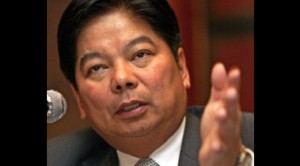BSP scales down BOP surplus forecast
The country’s imports are expected to grow at a slightly faster rate next year to support demand for construction materials that would go to rehabilitation efforts in communities destroyed by Supertyphoon “Yolanda.”
The Bangko Sentral ng Pilipinas (BSP) likewise said the increase in imports would be partly offset by higher demand for the country’s exports due to improving economic conditions of the Philippines’ main trading partners.
“The increase in projected imports is due to the effects of Yolanda. There are a lot of requirements to be imported,” BSP Governor Amando M. Tetangco Jr. said at a briefing Friday.
Tetangco also announced changes in projections for various components of the balance of payments (BOP), which accounts for all transactions between the Philippines and the rest of the world.
These include remittances from migrant workers, revenue from dollar-earning industries, foreign borrowings and debt payments by the government and the private sector, and the entry and exit of foreign investors from the country.
The BOP projections are submitted to the national government’s Development Budget Coordinating Committee (DBCC), which uses the assumptions to form its own official growth forecasts for the Philippine economy. The DBCC’s economic forecasts are vital in crafting the amount of money the government plans to spend every year.
The central bank chief said the Philippines was expected to import $66.5 billion worth of goods in 2014, up 9 percent year-on-year. This expansion is faster than the projected 2-percent growth in imports this year, according to the BSP forecasts.
Manufacturers in the Philippines, meanwhile, are expected to export $51 billion worth of goods, higher by 6 percent than 2013. This would be slightly better than the expected 4-percent increase in exports this year.
With the growth in imports expected to outpace exports, the country’s trade deficit, which is the difference between the value of imports and exports, would deteriorate next year, Tetangco said.
The deterioration of the country’s trade deficit would lead to a smaller current-account surplus next year, following a likely record high in 2013. The current account is a summary of the country’s income from exports, remittances and revenue from the business process outsourcing (BPO) and tourism sectors.
Next year’s current account surplus is expected to reach $10.4 billion, slightly lower than the projected surplus of $11.1 billion. The projected current account for this year would be the highest in the country’s history.
“Despite the difficulties and challenges we face, the current-account continues to be in significant surplus. This is one of the strengths of the Philippine economy,” Tetangco told reporters.
Apart from the current account, the BSP also announced that the country’s overall BOP surplus, which includes income from investments, would reach $5.3 billion.
